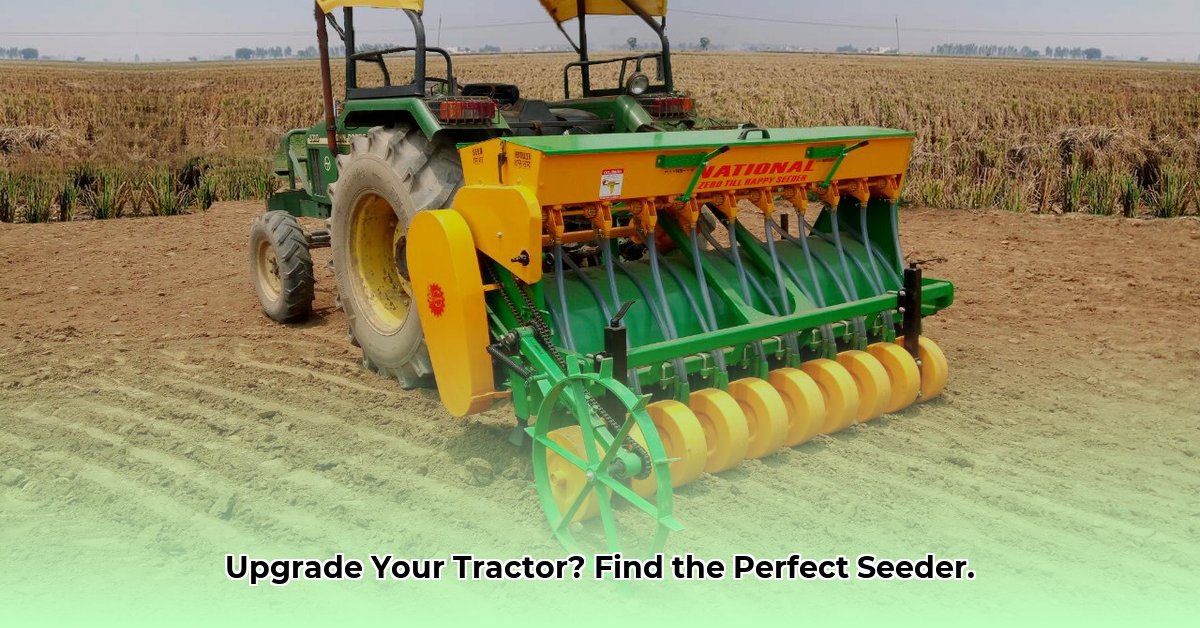
Understanding the Agricultural Seeder Market
Choosing the right agricultural seeder is crucial for efficient and sustainable farming. This comprehensive guide analyzes the market for new and used seeders, focusing on price variability, availability, and key factors influencing purchasing decisions. The market shows significant price fluctuation, making informed decision-making essential for farmers, dealers, manufacturers, and government agencies.
Market Overview: Price Variability and Key Trends
Seeder prices exhibit substantial variability, ranging from a few hundred dollars for older, used models to over $14,000 for new, high-end equipment. This price dispersion stems from several interconnected factors: brand reputation, model year, equipment condition, and geographical location. Understanding these factors is paramount for navigating this dynamic market effectively. (Data visualizations, such as charts and graphs illustrating price distributions and regional variations, would be inserted here if available from the source material.)
Factors Affecting Seeder Prices and Availability
Several key factors significantly influence seeder prices and availability:
Brand: Reputation and Market Share
Established brands like BEFCO and Billy Goat command higher prices due to their reputation for reliability and quality. However, lesser-known brands may offer comparable functionality at lower costs. The choice depends on balancing budget constraints with desired performance and longevity.
Model Year: Technological Advancements and Depreciation
Newer seeders often feature advanced technologies such as precision planting and GPS integration, leading to higher prices. Older models, while potentially functional, may lack these features and are more prone to mechanical issues. The trade-off between cost and technological capabilities needs careful evaluation.
Condition: Inspection and Standardization
A significant challenge in the used seeder market is the lack of standardized condition assessment. A subjective "good condition" from one seller may differ drastically from another's. Therefore, thorough pre-purchase inspection is crucial. Implementing a standardized grading system, perhaps based on a point system assessing key components' condition, would improve market transparency and buyer confidence.
Location: Regional Variations in Supply and Demand
Geographical location plays a pivotal role in both supply and demand. Regions with limited supply or high demand will naturally command higher prices. Transportation costs also contribute to price variations, especially for large and heavy equipment. (A map visualizing regional price variations would enhance this section if data is available.)
Actionable Insights for Different Stakeholders
The following recommendations provide practical guidance for various market participants:
Farmers:
- Budgeting: Establish a clear budget considering both initial purchase price and potential maintenance costs.
- Inspection: Thoroughly inspect any used seeder, ideally with the assistance of a qualified mechanic.
- Negotiation: Develop strong negotiation skills to secure favorable pricing.
- Maintenance: Invest in regular maintenance to extend the lifespan and performance of your seeder.
Dealers:
- Inventory Management: Analyze local demand to optimize inventory levels and minimize storage costs.
- Pricing Strategies: Adopt data-driven pricing strategies informed by market trends and competitor pricing.
- Customer Service: Provide comprehensive guidance and support to customers throughout the purchasing process.
Manufacturers:
- R&D Priorities: Focus R&D on improving efficiency, sustainability, and user-friendliness.
- Market Analysis: Continuously monitor market trends to anticipate future demands and adjust production accordingly.
- Sustainable Production: Prioritize the use of environmentally friendly materials and manufacturing processes.
Government Agencies:
- Policy Support: Develop policies promoting access to affordable and sustainable agricultural equipment for farmers.
- Resource Allocation: Allocate resources towards training programs to enhance farmers' knowledge of equipment selection and maintenance.
- Research Funding: Invest in research projects focusing on developing innovative and environmentally responsible seeding technologies.
Risk Assessment and Mitigation
Buying a seeder involves inherent risks. Proactive mitigation strategies can significantly reduce potential negative impacts:
| Risk Factor | Likelihood | Impact | Mitigation Strategy |
|---|---|---|---|
| Equipment Malfunction | Medium | High | Comprehensive pre-purchase inspection; extended warranty negotiation; reputable supplier selection. |
| Price Fluctuations | Medium | Medium | Thorough market research; price comparison across multiple vendors; off-season purchasing. |
| Supply Chain Disruptions | Low | Medium | Advance planning; early ordering; diversified sourcing. |
| Technological Obsolescence | Low | Medium | Leasing options; focus on core functionality over advanced features. |
Conclusion
The agricultural seeder market presents both opportunities and challenges. By understanding the factors influencing price and availability, and applying the actionable insights outlined above, farmers, dealers, manufacturers, and government agencies can work towards sustainable and efficient agricultural practices. A well-informed purchase decision translates to improved farm productivity and long-term profitability.
Appendix (Optional)
(This section would include detailed specifications of seeder models if data is available from the source material. This would allow for direct comparison of various models based on key features and performance characteristics.)